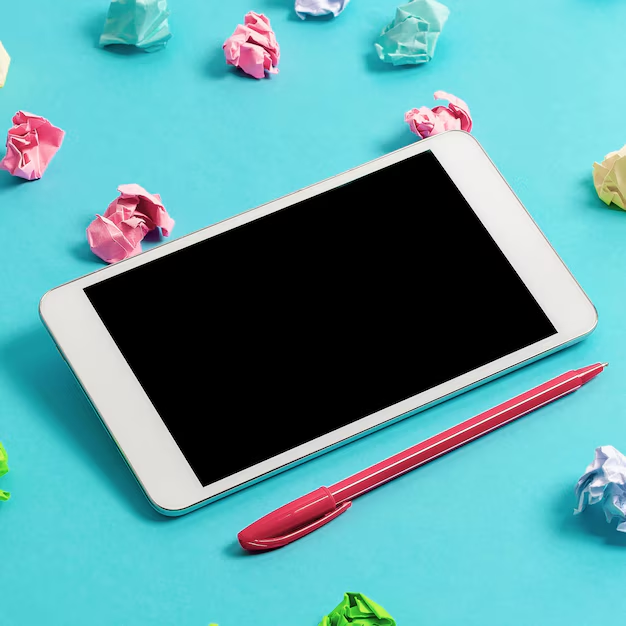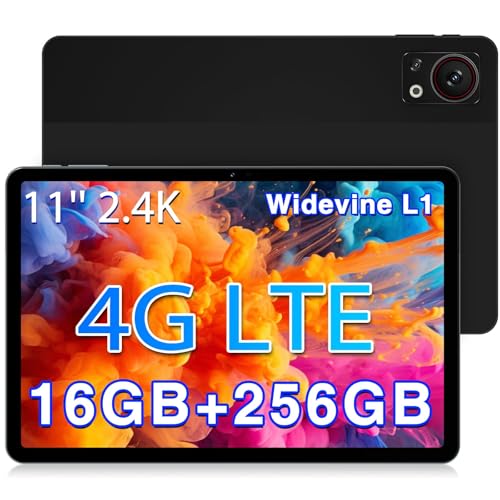In today’s fast-paced digital world, tablets have become one of the most versatile devices for work, study, and entertainment. Among the many options available, Android tablets stand out for their flexibility, affordability, and wide variety of features. Whether you’re looking for a tablet for online classes, streaming, gaming, or professional use, choosing the right one can make a huge difference in your experience.
But with so many models, screen sizes, and performance levels available, how do you know which Android tablet is right for you? This detailed buying guide will walk you through the most important factors to consider, along with the pros, cons, and use cases for different types of Android tablets.
Features
- ✅ High-resolution display for clear visuals
- ✅ Long-lasting battery for all-day use
- ✅ Expandable storage with microSD support
- ✅ Lightweight and portable design
- ✅ Compatible with apps for work, study & entertainment
Features
- Large HD touchscreen display
- Long battery life
- Expandable storage option
- Lightweight and portable
- Supports work, study, and entertainment
“This post contains affiliate links. As an Amazon Associate, I earn from qualifying purchases. This means I may earn a small commission if you purchase through my links at no extra cost to you.”
What to Consider Before Buying an Android Tablet
1. Purpose of Use
Think about how you’ll use the tablet:
- Casual Use: Web browsing, social media, streaming videos, and eBooks.
- Education: Online classes, note-taking, or student-friendly productivity apps.
- Work/Business: Document editing, multitasking, or presentations.
- Gaming/Entertainment: Smooth graphics, high refresh rates, and strong processing power.
2. Screen Size & Display
- 7–8 inches: Compact and portable, great for travel.
- 10–12 inches: Balanced choice for work and entertainment.
- 13+ inches: Large displays suited for professionals and artists.
- Look for Full HD or higher resolution for clear visuals.
- Check for IPS or AMOLED panels for better colors and brightness.
3. Performance (Processor & RAM)
- Entry-level tablets: Quad-core processors, 2–3 GB RAM (basic tasks).
- Mid-range tablets: Octa-core, 4–6 GB RAM (multitasking, light gaming).
- High-end tablets: Advanced chipsets, 8 GB+ RAM (gaming, design, and work).
4. Storage & Expandability
- 32 GB–64 GB: Suitable for light use.
- 128 GB+: Better for gaming, apps, and media files.
- Many Android tablets support microSD expansion, giving you flexibility.
5. Battery Life
- Look for 7–12 hours of battery life depending on your usage.
- Tablets with fast charging save time when you’re on the go.
6. Connectivity
- Wi-Fi only tablets: Affordable and best for home/office use.
- Wi-Fi + Cellular (LTE/5G): Allows internet access anywhere.
- Bluetooth for connecting headphones, keyboards, or smart accessories.
7. Camera Quality
- Front cameras (5–8 MP) are essential for video calls and online classes.
- Rear cameras (8–13 MP) are useful for photos and scanning documents.
8. Operating System & Updates
- Ensure the tablet runs on the latest Android version for performance and security.
- Some tablets provide long-term OS updates, which is beneficial for future use.
Product Summary: Android Tablets
An Android tablet is a portable, touch-based device powered by the Android operating system. It bridges the gap between smartphones and laptops, offering flexibility for entertainment, productivity, and learning. With sizes ranging from compact 7-inch models to professional-grade 13-inch devices, Android tablets cater to every type of user.
Key Features at a Glance:
- Wide range of screen sizes and resolutions
- Expandable storage via microSD cards
- Affordable to premium models available
- Supports productivity apps, games, and streaming services
- Flexible connectivity options (Wi-Fi, LTE, Bluetooth)
Pros & Cons of Android Tablets
| Pros | Cons |
|---|---|
| Affordable options across all budgets | Software updates may vary by model |
| Wide variety of screen sizes & designs | Some models may have lower build quality |
| Expandable storage flexibility | Battery life depends on usage & apps |
| Compatible with most apps & services | Performance varies across price ranges |
| Great for media, gaming, and productivity | Premium models can be costly |
Who It’s Best For
- Students: Affordable models with good battery life for online learning.
- Professionals: Larger, high-performance tablets for multitasking and productivity apps.
- Artists & Designers: Large screen models with stylus support for digital art.
- Families: Shared tablets for streaming, reading, and light gaming.
- Travelers: Compact tablets for entertainment on the go.
Use Cases of Android Tablets
- Entertainment Hub: Watch movies, stream music, or play games.
- Digital Notepad: Take notes during lectures or meetings.
- Work on the Go: Edit documents, presentations, or spreadsheets.
- Reading Device: Ideal for eBooks, magazines, and online articles.
- Learning Platform: Great for kids’ educational apps and online classes.
FAQs
Q: What screen size is best for everyday use?
A 10-inch tablet offers the best balance between portability and usability.
Q: Can Android tablets replace laptops?
Yes, high-performance tablets with keyboards and stylus support can handle many laptop tasks.
Q: How much storage should I get?
For casual use, 64 GB is enough. For gaming or media-heavy users, opt for 128 GB or higher.
Q: Do Android tablets support SIM cards?
Some models offer cellular versions with LTE or 5G connectivity.
Q: Are Android tablets good for kids?
Yes, many models include parental controls, kid-friendly apps, and durable designs.
Final Recommendation
When it comes to choosing the right Android tablet, focus on your specific needs and budget.
- For casual use, a budget-friendly model with 32–64 GB storage and a decent display is perfect.
- For students, go for mid-range tablets with good battery life and expandable storage.
- For professionals, choose high-end tablets with powerful processors, large displays, and stylus support.
- For families or kids, look for durable designs with parental controls.
The world of Android tablets offers flexibility, affordability, and a wide range of options for every lifestyle. Whether you’re buying your first tablet or upgrading to a more powerful one, keeping these factors in mind will help you make a smart, informed choice.




